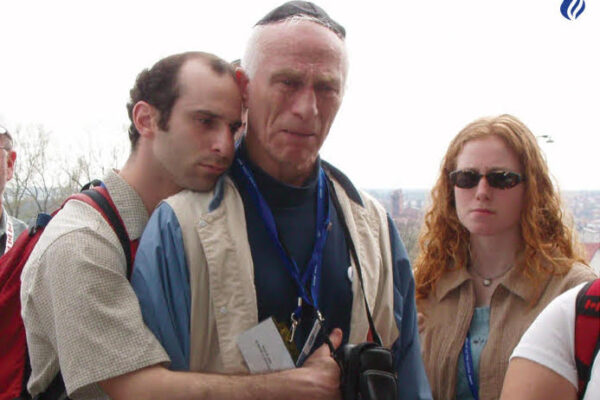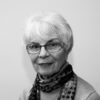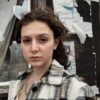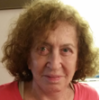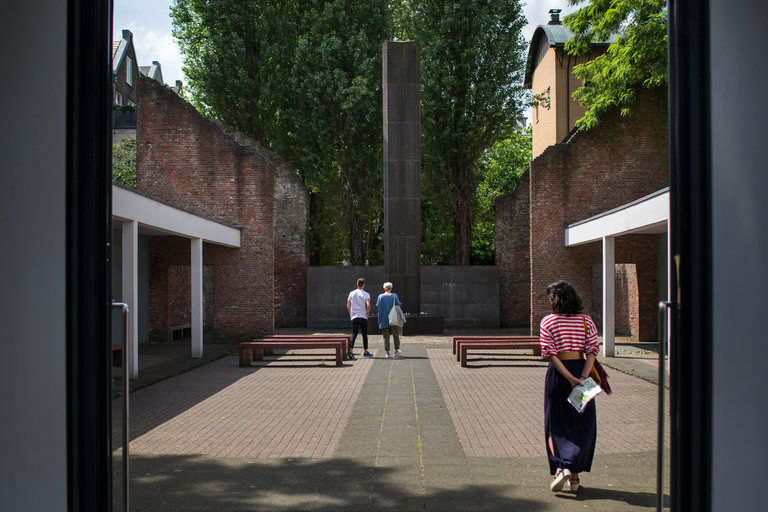
A memorial at the Hollandsche Schouwburg in Amsterdam. Anne Frank’s diary has long been the dominant narrative of the Netherlands’ experience during the Holocaust, but the Dutch are trying to tell a more complete story of the Nazi occupation. Credit Ilvy Njiokiktjien for The New York Times
AMSTERDAM — Anne Frank is only part of the story.
The diary of the young Jewish girl, who came of age hiding from the Nazis in Amsterdam, has long been the dominant narrative of the Netherlands’ experience during World War II. Hers is a story of inspiration and resistance that in many ways the Dutch have promoted and chosen to remember.
But the rest of the story of the Holocaust in the Netherlands has gone largely untold, and survivors and others fear that it is in danger of being forever forgotten.
So it was that after a 10-year struggle, the City Council in May approved a location for a memorial wall for the roughly 102,000 Dutch Jewish victims of the Nazis. The decision coincided with the opening of the National Holocaust Museum, a separate and sometimes competing effort to build a permanent home in Amsterdam for exhibitions about the Holocaust and other genocides.
Together, the new projects reflect a movement among a second and third generation of postwar Dutch Jewish leaders to balance what they feel is an incomplete, or even distorted, understanding of what happened during the five years of Nazi occupation of the Netherlands.
“When I talk to younger people, I tell them I’m the same as Anne Frank,” said Jacques Grishaver, 74, another “hidden child,” who was born in Amsterdam in 1942. “That’s always where I start, because I want to tell them that it wasn’t only Anne Frank. There were more.”
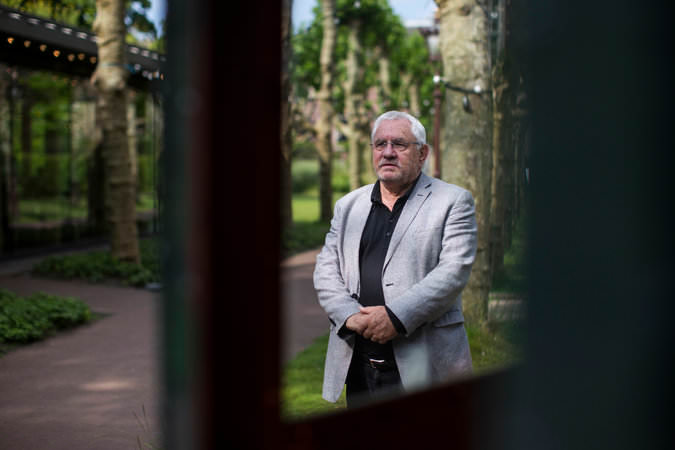
Jacques Grishaver, a Jewish “hidden child” born in Amsterdam in 1942, is the chairman of the Auschwitz Committee. The committee fought for 10 years to build a memorial wall to commemorate Dutch Jewish victims of the Holocaust. Credit Ilvy Njiokiktjien for The New York Times
Mr. Grishaver may have lost as many as 50 relatives to the Nazi extermination. Today he is the chairman of the Auschwitz Committee, which led the fight for the memorial wall.
Between 75 and 80 percent of the Netherlands’ Jews were killed during the war, the highest rate in Western Europe.
Although about 150,000 Jews were living in the Netherlands in 1940, including about 25,000 German Jews who had come as refugees, only about 15,000 were counted during the postwar census of 1947.
By comparison, neighboring Belgium lost about 40 percent of its Jewish population, and France lost about 25 percent.
From the start, the push for a memorial to honor these victims had the support of Daniel Libeskind, the Polish-American architect of the Ground Zero Master Plan in New York and the Jewish Museum Berlin.
Mr. Libeskind, while visiting Amsterdam in 2011 to deliver an annual “never again” lecture for the Auschwitz Committee, learned of the plans and volunteered to design the wall before a budget had even been established.
He conceived of the wall’s illuminated names, he said in a telephone interview, “to write the names back into the book of life, out of the book of forgetting and into the book of the mind, of the heart and the soul of Amsterdam, of Holland.”
“All the major cities of Europe have Holocaust memorials, and Amsterdam is really one of the last,” he said. “I think it’s one of the most important projects, because so much happened there.”
“We know most of it only from the Anne Frank diary, and most people associate the story with that incredible document,” he added. “But when you read what happened in Holland, it’s unfathomable that people haven’t talked about it yet.”
The new memorial, which will cost about 5 million euros, or $5.5 million, should be completed by the end of 2017 or early 2018.
Both the memorial wall and the new Holocaust museum — which is expected to cost €22 million, or $24 million, when its four-year plan is completed — will be established in the Jodenbuurt, or Jewish district, the eastern section of the old city center.
Today the neighborhood is home to a bustling open-air market, City Hall, the Rembrandt House Museum, the Hortus Botanicus botanical garden and the Artis Zoo.
In the late 16th and early 17th centuries, the first Jewish migrants from Portugal and Spain settled in this area of Amsterdam. In what is now called the Jewish Cultural Quarter, there are still landmarks of the old Jewish life, including the Portuguese Synagogue; a cluster of former synagogues that have been turned into the Jewish Museum; and the Hollandsche Schouwburg, a former theater that the Nazis used as a deportation center and is now a museum and remembrance chapel.
It was also in this neighborhood that the Nazis consolidated the Netherlands’ Jews before deporting them to concentration camps.
Beginning in 1943, about 34,000 Dutch Jews were sent to the Sobibor death camp in Nazi-occupied Poland, and only 18 survived, said Maarten Eddes, the chairman of the Sobibor Foundation in the Netherlands. This relatively unknown camp accounted for about a third of the Dutch Jewish victims of the Holocaust, Mr. Eddes said, and Auschwitz accounted for most of the others.
For many, the approval of the memorial was made more poignant by the death of the Holocaust survivor and Nobel laureate Elie Wiesel this month.
“The generation of survivors is dying on us, and we no longer have them to tell the story,” said Emile Schrijver, the general director of the Jewish Historical Museum and the Jewish Cultural Quarter in Amsterdam.
“We have to keep telling the story for them, lest we forget,” he said.
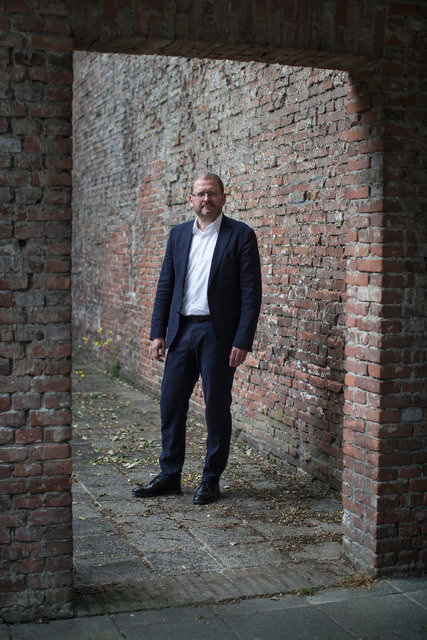
Emile Schrijver, the general director of the Jewish Historical Museum and the Jewish Cultural Quarter in Amsterdam. Credit Ilvy Njiokiktjien for The New York Times
One reason these stories have not been given a public showcase until now is that people may have preferred to forget, said Karel C. Berkhoff, a senior researcher at the N.I.O.D. Institute for War, Holocaust and Genocide Studies in Amsterdam.
“There was a sense that this was an ugly past and we needed to cleanse ourselves of it, and this was sometimes even an attitude among survivors,” he said.
The Anne Frank House, which had 1.2 million visitors last year, is one of the most popular attractions in the Netherlands, partly because Frank was an inspirational figure whose story focused on hope.
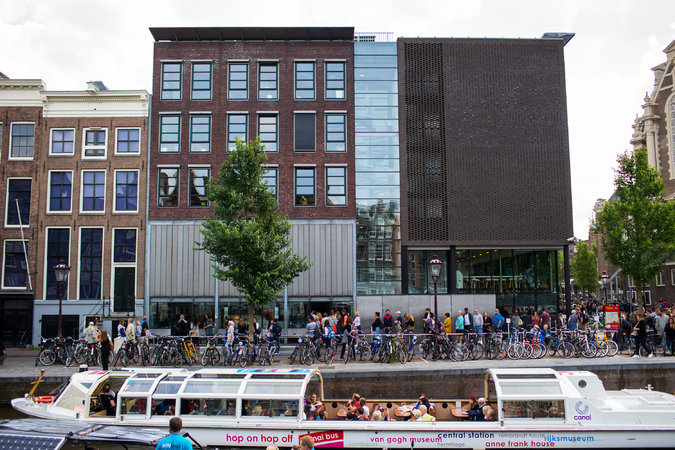
The Anne Frank House in Amsterdam. Credit Ilvy Njiokiktjien for The New York Times
But those who have promoted the new projects fear that people may come away from her narrative with the impression that most Dutch citizens were protective of their Jewish neighbors, and that the Dutch Resistance was more effective than it was.
“It’s certainly not true that the Dutch were all protective of the Jews,” said Joel J. Cahen, the project director of the National Holocaust Museum. “It’s also not true that the Dutch were all terrible.”
“Anne Frank is one image of Holland, very much promoted by the Dutch,” he added. “After the war, the Resistance was immediately glorified. We heard a lot about the Resistance, and a little bit about what happened to the Jews.”
The National Holocaust Museum will not only focus on the wartime period, Mr. Schrijver said, but also try to help people understand that the deaths had repercussions for Jews and for Dutch society that will continue for generations to come.
“The war didn’t stop in 1945,” he said. “It basically influenced who we are and how we think, and our whole perspective on society depends upon it.”
Mr. Grishaver, who was 3 when he left his hiding place, said 71 years was a long time to wait for any kind of large-scale commemoration.
“It’s time,” he said. “We have a lot of people the same age as Elie Wiesel who pray that the monument will be built before they die so that they can touch the names of their relatives.”
Because of an editing error, an earlier version of a picture caption with this article misidentified a site in Amsterdam. It is a memorial at the Hollandsche Schouwburg, not the National Holocaust Museum.
Originally published HERE

